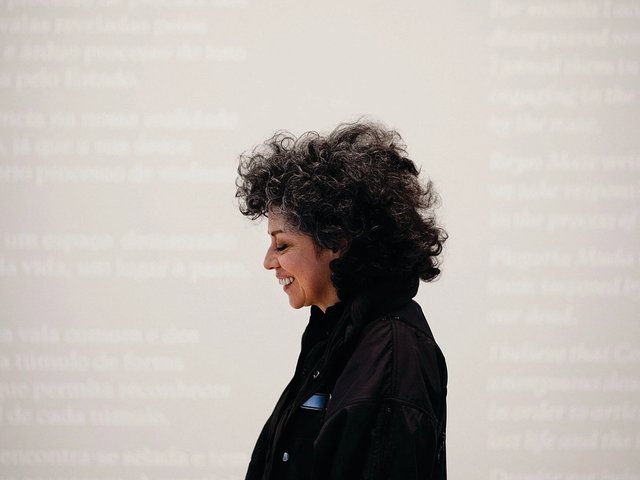The timing has sadly never been more apt for a retrospective of the Colombian artist Doris Salcedo, which opens at the Guggenheim Museum on Friday, 26 June. For 30 years, Salcedo has been responding to political violence and social injustice through her work, created from everyday materials such as furniture and clothing. “I don’t have the illusion that art will save lives or diminish the violence. I don’t believe in aesthetic redemption. Such a thing is not possible,” the artist told The Art Newspaper in an interview published in our July/August issue. What her work succeeds in doing, however, is to recognise the humanity of the victims affected by such violence.
Each work starts with serious research into a specific incident or series of events, and Salcedo often interviews the families of victims first-hand to gather testimonies that inform the finished work. “I do research as though I were a detective,” Salcedo says. “If I have the chance to go where the victim lived, if I have the chance to walk where the person walked, and recreate all the trajectories, I’ll do it. Because I need to have all the small details of that life, even though I might not place them in the finished work.”
The installation Plegaria Muda (mute prayer, 2008-10), for example, made of stacked tables with slabs of earth in between and delicate blade of grass growing through the cracks, came out of research into gang violence in the neighbourhoods of southeast Los Angeles, as well the killing of civilians in Colombia by soldiers, who then dressed the corpses up to look like guerilla fighters.
For her most recent, unrealised piece, Palimpsest (2013-present)—which the artist had hoped to install in an empty city lot when her retrospective opened at the Museum of Contemporary Art, Chicago earlier this year—she spoke to the mothers of local young men who had been killed in shootings. The names of the victims would have been spelt out in droplets of water that slowly seeped up through blocks of concrete, intentionally blurring out other names that had been faintly painted on the stone. Salcedo still hopes to realise the piece, the artist told us, although it may not be in the US.
And a beautifully hand-stitched shroud made from individually preserved rose petals, A Flor de Piel (2014), is dedicated to a Colombian nurse who was tortured and killed by paramilitary troops. The title is a Spanish idiom similar to the English phrase “wearing your heart on your sleeve”.
For the exhibition, a number or works that had been separated for years were reunited, including La Casa Viuda (the widowed house, 1992–95), a series of doors and frames divorced from their buildings, and Unland (1995-98), pairs of tables that have been cut in half and stitched together. “The good part about not having been able to see the work in years and years, sometimes in 20 years, was that when I received them, it was like someone else’s,” Salcedo says. “So there is a distance, I’m not emotionally attached to them. And I can work freely on the installations as though I were working with some ready-made objects that I somehow found here.”
Originally organised by the Museum of Contemporary Art, Chicago’s director Madeleine Grynsztejn and the curator Julie Rodrigues Widholm, the show travels from that institution to the Guggenheim Museum in New York, where the presentation (organised by Katherine Brinson) runs until 12 October. Its next stop is the Pérez Art Museum Miami, 6 May-23 October 2016.



